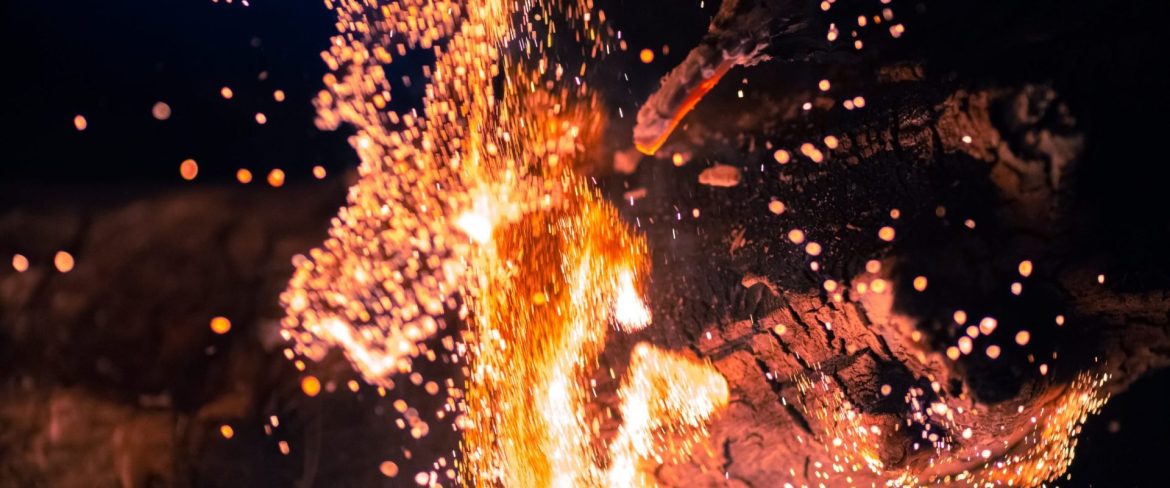Source:https://arr.news, Philip Hopkins, First Published March 25th, 2024
A major study after the devastating 2013/20 wildfires in Victoria and New South Wales found that prescribed burning dramatically reduced the intensity of the fires, according to a bushfire expert.
Dr Tony Bartlett, a winner of the Australian Fire Service Medal (ATSM), said after 2019/20, a major study was undertaken to test the effectiveness of prescribed (fuel reduction) burning at a landscape scale in terms of reducing the severity of the wildfire in a wide range of forest ecosystems. Dr Bartlett was part of a three person panel that investigated the impact of the wildfires on Victoria’s Regional Forest Agreements.
The major study examined 307 prescribe burns greater than 200 hectares that had been conducted in the previous five years and which were within the footprint of the 2019/20 wildfires.
“It found that about half (48 per cent) of these prescribed burns resulted in significantly reduced wildfire severity,” said Dr Bartlett, writing in the Commonwealth Forest Association newsletter.
“It also found that the more recent prescribed burns had a more positive impact on reducing fire severity, with 66 per cent of one-year-old burns having a positive impact compared to 42 per cent of five-year-old burns.”
Dr Bartlett said Australian academics Professor David Lindenmayer and Associate Professor Philip Zylstra had made claims about the impact of prescribed burning on forest flammability.
“None of the claims.. are supported by evidence from long term monitoring of replicated trials where prescribed burning has been conducted,” he said
The academics in articles reproduced in the CFA newsletter argued that prescribed burning and logging made Australian native forests more flammable. They said prescribed burning should be confined to areas close to high-value assets and that. when fire is excluded for mare than 40 years, the native forests do not burn at high intensity because the vertical connectivity of the forest structure is reduced through natural ecological processes.
In contrast, Dr Bartlett said the late Associate Professor Kevin Tolhurst studied the effects of repeated low-intensity preseribed fire in mixed species eucalypt forest in south east Australia using repeated trials (including no-burning sites) for almost 40 years.
“He found there was no lose of species but the impact on understory plant species varied according to the nature of different species,” Dr Bartlett said.
“My own observations at these research sites in October 2024 indicated there was significantly less understorey vegetation in the repeatedly burnt sites than in the unburnt control sites – which contradicts the Lindenmayer-Zylstra view that prescribed burning in eucalypt forests promotes dense flammable understorey vegetation.”
Dr Bartlett said the academics’ propositions ignored the evidence of comprehensive fire research done by the CSIRO and state government land management agencies, as well as the lessons from numerous inquiries after major wildfires over the past 80 years.
“Moreover, the notion that fire can be excluded from most Australian forests for more than 40 years is fanciful, given the increased frequency and extent of wildfires over the past 20 years under challenging climate conditions,” he said.
“Importantly, there are numerous journal articles that either challenge their research findings or present evidence that indicates their findings are incorrect.”
Dr Bartlett said the academics’ claim that timber harvesting causes the native forest to be more flammable was undermined by evidence. Wildfire, including the rate of spread and fire intensity, depended on three main factors: the quantity and structure of fuel in the vegetation; the prevailing weather – wind and humidity; and the topography of the location of the fire.
Thus the severity of the wildfire was the result of interacting factors, “not a single factor such as whether or not timber harvesting has been undertaken in that location”
Dr Bartlett cited several wildfire examples:
- In NSW, the 2019/20 bushfire burnt about 4.1 million hectares of forest, including 2.23m ha of national park and 0.76m ha of state forest. Timber harvesting had made up about 0.21m ha of state forest over the previous 35 years. Official NSW data showed about 53 per cent and 50 per cent burnt at high and extreme severity in both tenures. At the landscape level, they concluded that fire severity was much the same regardless of tenure;
- Fire in 2019/20 burnt more than 855,00 ha (79 per cent), 37 per cent extreme severity, of the Greater Blue Mountains World Heritage Area, but timber harvesting had no impact in the wilderness area. Areas of prescribed burning five years before had 26 per cent burnt at high or extreme severity, and
- In Eastern Victoria, the 2019/20 wildfires burnt 1.5m ha – 89 per cent public forest that included 486,000ha of national park and 403,000ha of state forest. Victorian data showed that 48 per cent of national park and 49 per cent of timber harvest areas burnt at high severity.
Dr Bartlett said the academics last year published a review of selected global literature on the role that disturbance (fire, timber harvesting or clearing) can play in forest flammability. Much of this relied on their previously published articles.
“They did not quote any of the extensive literature that showed a reduction in fire severity in areas where prescribed burning had been conducted,” he said.
Concluding, Dr Bartlett said clearly the greatest risk to Australian native forests is the increased frequency of landscape-scale wildfires burning at high intensity.
This would “ultimately change the composition and structure of our forest systems”.
“The lived experience evidence clearly shows that timber harvesting is not increasing the risk of native forests being burnt at high severity,” he said.
“Far from being a cause of increased high severity fire, prescribed burning reduces fire severity in many forest areas where it has been undertaken.”



 This information will never be shared to third parties
This information will never be shared to third parties